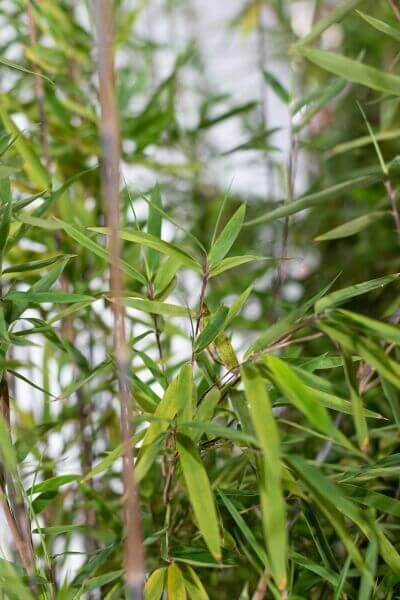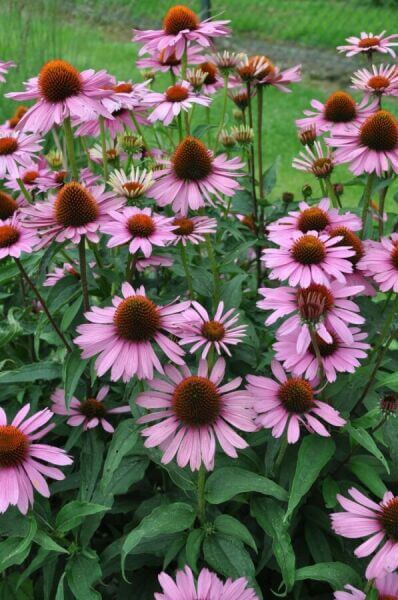Best Hedge Plants For Wet Conditions
Enhance your garden's allure with lavish hedge varieties such as Yew (Taxus), Thuja, Laurel, Photinia, and Bamboo, commemorated for their structural integrity and ecological advantages.
Yew and Thuja offer evergreen protection and winter season resilience, while Laurel uses fast development and broad, aromatic leaves.
Photinia adds seasonal beauty with its vibrant red foliage, and Bamboo lends a low-maintenance, peaceful atmosphere.
These hedges improve air quality, minimize sound, and create tranquil, personal areas.
Appropriate planting, spacing, and upkeep make sure vigorous growth and eco-friendly consistency.
Explore how these rich ranges can raise your garden's appeal and wellness.
Key Takeaways
Change Your Garden With Lush Hedge Ranges
- Select Yew for its dense, evergreen growth and unequaled longevity.
- Choose Laurel for its fast development and broad leaves, making sure quick privacy.
- Select Photinia for its lively seasonal foliage, which turns a striking dark red.
- Make use of Bamboo for a low-maintenance, winter-hardy hedge with visual appeal.
- Space plants 2-3 per meter and prune routinely for optimum growth and health.
Popular Hedge Plants
When transforming a garden with rich hedge ranges, it's important to think about popular hedge plants such as Yew, Thuja, Laurel, and Photinia due to their unique attributes and benefits.
Yew (Taxus) is highly esteemed for its longevity and dense, green growth, making it a prime choice for withstanding landscapes.
Thuja is noted for its evergreen foliage and robust winter season durability.
Photinia adds seasonal vibrancy with red leaves that darken over time, producing vibrant visual appeal.
Laurel uses quick development and fragrant, broad leaves, suitable for quick privacy.
Additionally, Bamboo is an excellent option for atmosphere, providing a low-maintenance, winter-hardy option that boosts the garden's visual with its elegant, swaying walking sticks.
These choices cater to a variety of horticultural requirements and choices.
Advantages of Garden Hedges
Garden hedges use a wide range of advantages, making them an important addition to any landscape. These natural barriers are affordable to implement and provide considerable wind security, boosting air blood circulation and adding to sound decrease. The thick foliage of hedges like Thuja and Beech guarantees privacy by blocking visibility, producing a peaceful and secluded environment.
Hedges also play an essential function in microclimate policy, supplying a stable environment that cultivates plant growth and lessens temperature variations. Their complex leaf structures filter pollutants, enhancing air quality and adding to a healthier garden community.
Furthermore, hedges stand out in noise decrease, soaking up and deflecting sound waves to lower ambient noise levels. This double performance of offering both acoustic and visual privacy improves the total tranquility and aesthetic appeal of any garden.
Planting and Maintenance Tips
For an effective hedge, careful preparation of the planting location is essential. Ensure the soil has appropriate pH and drainage to support strong root advancement.
Area the plants properly for the picked types. Water the hedge frequently during its initial growth phase, adjusting as needed with seasonal changes.
Implement a systematic pest control and disease prevention strategy, using chemical or organic treatments when necessary. Regularly inspect for aphids, mites, and fungal infections.
Apply mulch to maintain wetness and suppress weeds. Seasonal pruning promotes thick development and air blood circulation, essential for plant health.
Following these standards will assist you cultivate a lively, properly maintained hedge that boosts the appeal of your garden.
Spacing and Cutting Standards
Spacing and Trimming Guidelines
Proper spacing and cutting are important for cultivating healthy, visually appealing hedges. Adequate spacing ensures each plant gets adequate nutrients, light, and airflow.
Follow these guidelines for optimum hedge upkeep:
- Spacing: Position hedge plants 2-3 plants per meter to encourage robust growth.
- Pruning Strategies: Regular pruning is important for maintaining desired hedge height and shape. Trim brand-new growth in summer and cut back older wood throughout winter.
- Seasonal Care: Adjust cutting schedules and approaches according to seasonal requirements to ensure plant health.
- Hedge Height: Frequently monitor and cut to preserve the wanted hedge height and accomplish uniform looks.
Following these actions will ensure your hedge grows, improving both the appeal and performance of your garden.
Choosing the Right Hedge
Picking the Right Hedge
Choosing the proper hedge involves assessing aspects such as mature height, foliage density, and ecological strength. Successful hedge plant selection needs comprehending each species' growth attributes and site-specific flexibility.
For example, Yew (Taxus) offers outstanding durability and thick growth, while Thuja is notable for its winter durability. In Additional info addition, thinking about upkeep requirements is crucial; fast-growing species like Laurel or Privet demand regular trimming, whereas low-maintenance choices like Bamboo or Ivy may be preferable for those looking for very little maintenance.
Ecological aspects such as soil type, light schedule, and wetness conditions must likewise assist the selection process. This careful technique makes sure the selected hedges will thrive, providing both functional and visual advantages to the garden landscape.
Delivery and Planting Recommendations
To guarantee your hedge plants grow, they need to be provided by specialized carriers and planted promptly upon arrival.
Follow these necessary steps for effective planting:
- Soil Preparation: Improve the soil with raw material to enhance drain and nutrient content.
- Planting Depth: Create a trench two times the width and equal to the depth of the root ball.
- Watering Techniques: Water thoroughly after planting, keeping the soil regularly damp but not filled.
- Mulching: Use a layer of mulch to maintain wetness and suppress weeds.
Customer Support and Service
Offered the essential role of prompt help in horticultural pursuits, our consumer assistance group is readily available 6 days a week through telephone, email, and social media to provide professional recommendations and quickly attend to any issues. Their commitment to fast reaction times guarantees client complete satisfaction by fixing inquiries associated with plant health, ideal planting techniques, and maintenance schedules.

Response Time
----------------------
Within 24 hours
This detailed support group, reinforced by a stellar 9.3/ 10 client score, highlights our dedication to boosting the gardening experience for every single customer.
Often Asked Concerns
The Length Of Time Does It Consider Hedge Plants to Develop?
Hedge plants usually need one to 3 years to end up being completely established, with the specific period differing by types and growing conditions.
Reliable care throughout this important duration is vital for robust development. Constant watering, watchful weed control, and appropriate fertilizer application are pivotal in promoting strong root development.
For instance, fast-growing types like Laurel might establish faster, while slower-growing varieties such as Yew may take longer. Thorough upkeep accelerates the establishment process, leading to healthy and dense hedges.
What Are the very best Hedge Plants for Privacy?
The concern of the finest hedge plants for privacy includes examining evergreen and deciduous choices.
Evergreen hedges like Thuja, Laurel, and Cypress offer year-round coverage, making sure constant privacy.
On the other hand, deciduous hedges such as Beech use seasonal personal privacy, shedding leaves in cooler months.
Key maintenance pointers for privacy hedges include routine trimming, fertilizing in spring, and proper spacing-- normally 2 to 3 plants per meter.
Furthermore, consistent watering and persistent weed removal are vital for promoting healthy, dense development.
Can Hedge Plants Draw In Wildlife to My Garden?
Yes, hedge plants can attract wildlife to your garden by supplying important advantages like shelter, food, and nesting sites, therefore improving regional biodiversity. For instance, yew, holly, and laurel are excellent for drawing in birds, while ivy supports a variety of bugs.
Nevertheless, it is essential to keep in mind that there are some drawbacks, such as increased maintenance to handle pests and routine maintenance. Carefully picking and maintaining hedge varieties can assist balance these advantages and drawbacks, ultimately promoting a sustainable and vibrant community in your garden.
Exist Any Blooming Hedge Plants Available?
Yes, there are flowering hedge plants available that can improve the beauty of your garden.
For example, Elaeagnus, likewise referred to as Olive Willow, produces fragrant white flowers in the fall, adding a touch of beauty.
Photinia, another popular option, showcases vibrant red leaves that mature into a rich green, producing a vibrant visual effect throughout the seasons.
To ensure these plants flourish, it's vital to practice correct pruning techniques and seasonal maintenance, such as trimming new growth in the summertime and cutting down in the winter season.
These procedures will assist maintain the health and aesthetic appeal of your flowering hedges.
How Do I Prevent Pests in My Hedge Plants?
To prevent pests in hedge plants, employ natural pest control approaches and keep correct hedge care. Present useful pests like ladybugs, which victimize damaging bugs, to develop a well balanced environment.
Frequently check your hedges for indications of problem and without delay get rid of any afflicted parts to prevent the spread. Ensure the health of your hedges by applying balanced fertilizers and supplying appropriate water.
Use mulching to keep soil wetness and correct spacing to lower plant tension and promote robust growth. These practices collectively assist in decreasing insect problems and maintaining a healthy hedge.
Conclusion
In essence, choosing the ideal hedge varieties such as Yew, Thuja, and Laurel can transform any garden into a serene sanctuary. These plants offer year-round plant, boost aesthetic appeal, and deal useful benefits like sound reduction and wind defense.
Correct planting strategies, precise spacing, consistent watering, and seasonal cutting are important for optimal development.
Trustworthy delivery services and skilled client support guarantee a seamless experience from purchase to planting, making it easier than ever to elevate your outside space.
Garden hedges use a wide range of advantages, making them an important addition to any landscape. These natural barriers are affordable to implement and offer significant wind security, enhancing air flow and contributing to noise reduction. The thick foliage of hedges like Thuja and Beech ensures personal privacy by obstructing exposure, creating a peaceful and remote environment.

Pruning Strategies: Routine pruning is important for maintaining wanted hedge height and shape. Trim new development in summertime and cut back older wood throughout winter season.